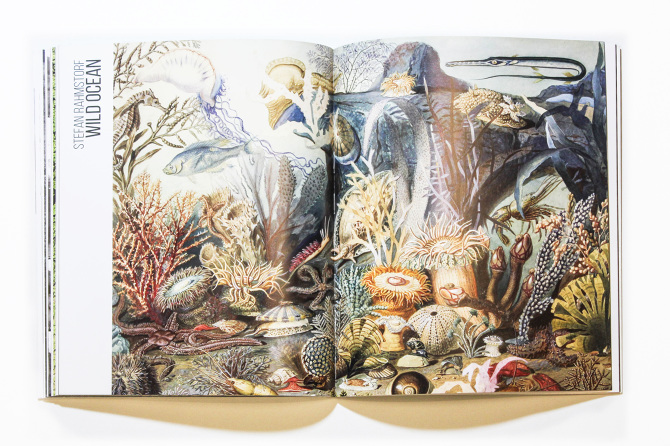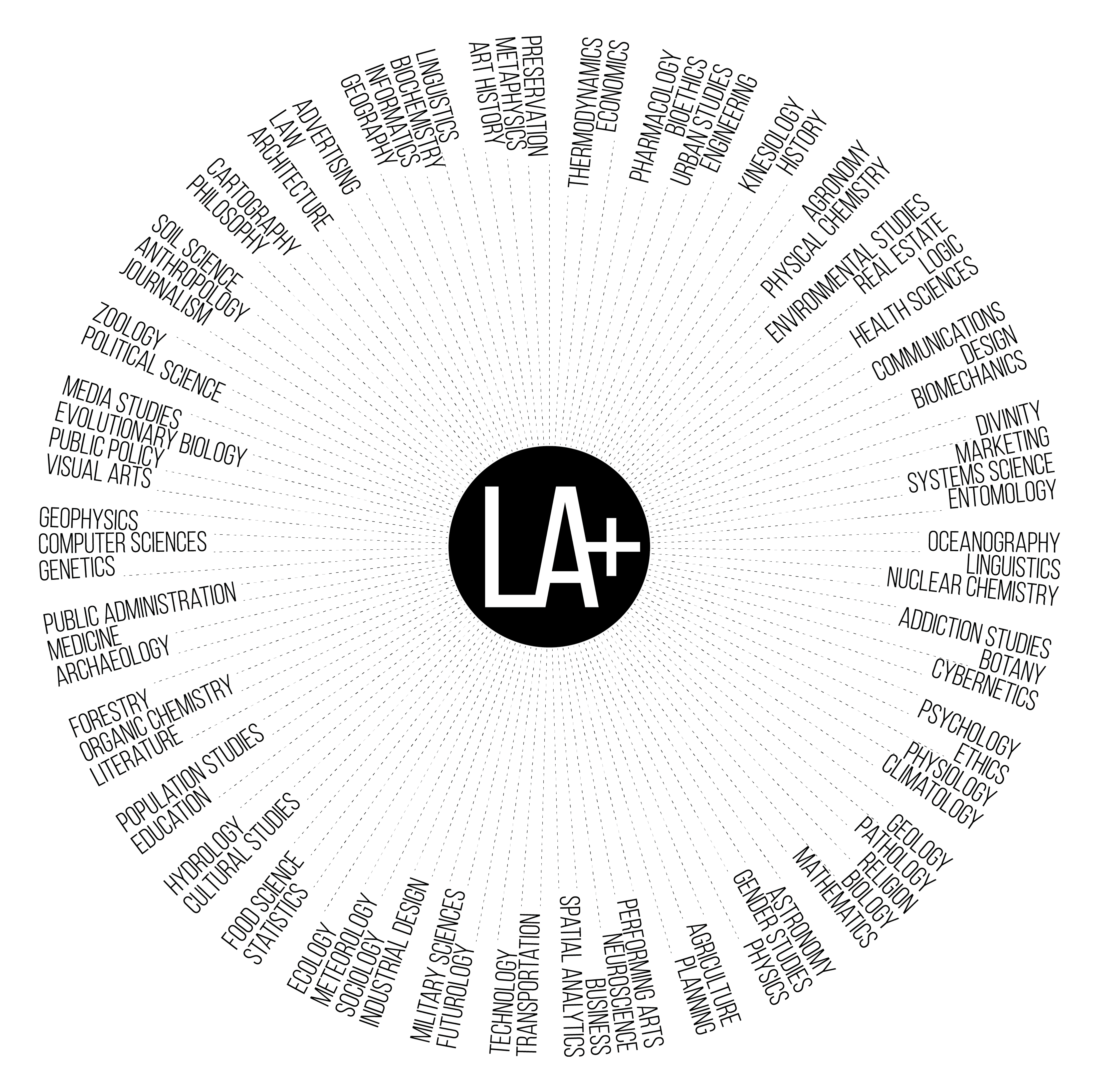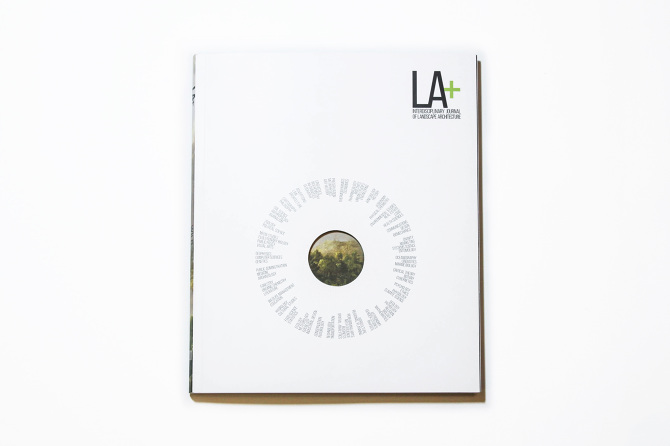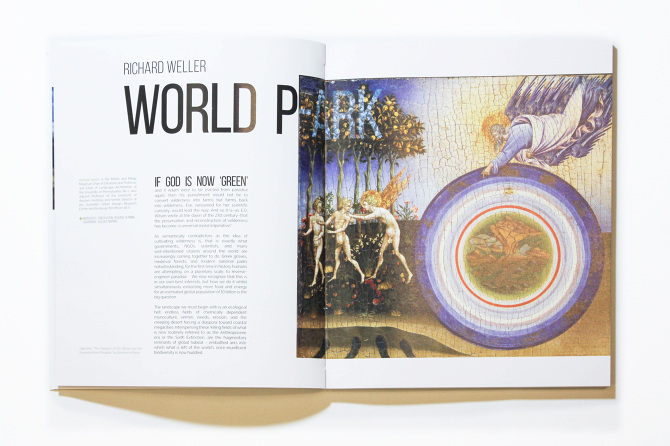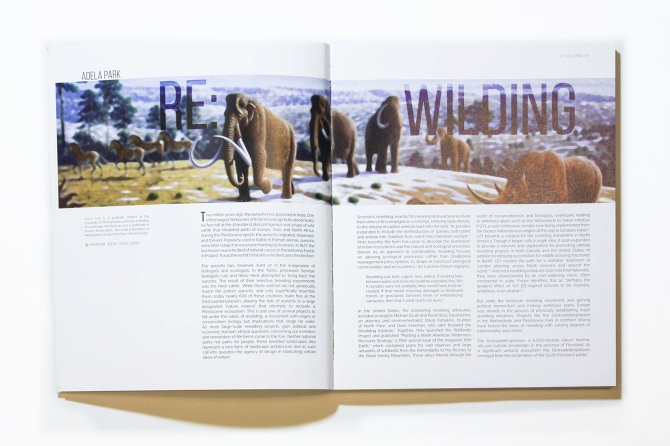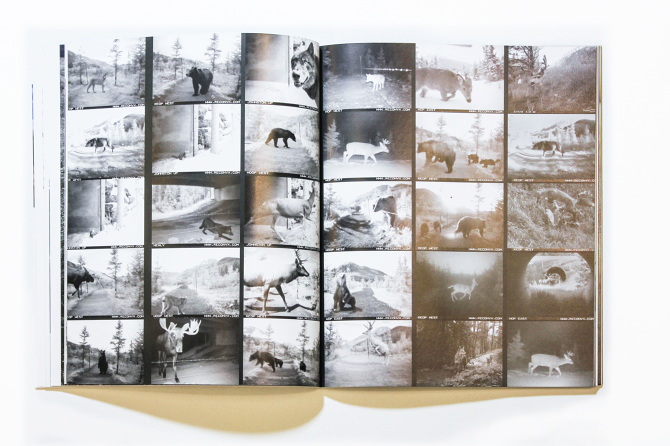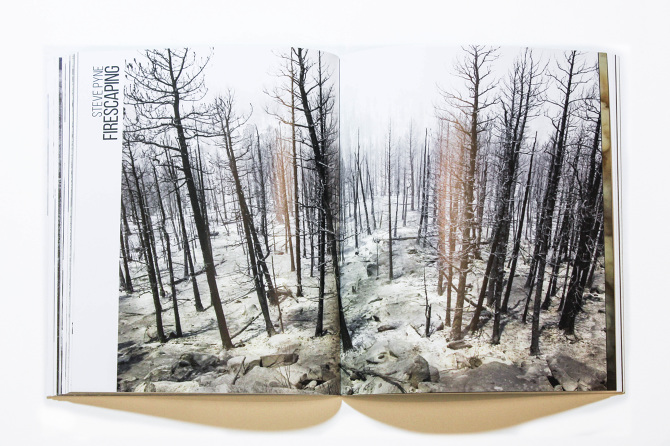A fine addition to the ranks of landscape architecture journals that recently emerged is LA+, The Interdisciplinary Journal of Landscape Architecture, from the Penn. From the website, the journal is billed as the “…the first truly interdisciplinary journal of landscape architecture. Within its pages you will hear not only from designers, but also from historians, artists, lawyers, psychologists, ecologists, planners, scientists, philosophers, and many more besides. Our aim at LA+ is to reveal connections and build collaborations between landscape architecture and other disciplines by exploring each issue’s theme from multiple perspectives.”
Interest piqued. And they were nice enough to send me a copy of their inaugural issue, WILD which “…explores the concept of WILD and its role in design, large-scale habitat and species conservation, scientific research, the human psyche, and aesthetics.”
Impressively curated and designed, this is a journal you keep around in your library long-term, for a follow-up read or to peruse the beautiful imagery. As an introduction on the website, a short thesis on issue one:
“Wildness has long occupied a romantic and somewhat dormant position in the discussion of landscape theory and practice. However, current initiatives aiming to “rewild” rural, urban, and suburban environments attest to its renewed significance. It is no longer just a question of saving or protecting wilderness, but one of how we can design novel ecosystems that stimulate the emergence of new forms of biological and cultural diversity.”
The list of contributors is massive, and the breadth of topics ranges from the general, such as Mick Abbott’s ‘Practice of the Wild: A Rewilding of Landscape Architecture’, to the global, such as Richard Weller’s ‘World P-ark’, to the site-specific, like Mousseau & Moller’s ‘Landscape-Scale Consequences of Nuclear Disasters.” I offered to do a review of the issue, and realized quickly that it was no simple task due to the amount of material contained within (which alas, i’m still reading with much enjoyment).
Thus, it is far more that can be elaborated on in terms of full reporting on every essay. For that, order a copy and enjoy the density of information. Here’s a few snippets and thoughts of my own, in relation to landscape architecture practice and how the explorations of this concept seen through the interdisciplinary lens.
The concept of the wild is present in our conception of landscape architecture practice at many scales. The vision of a global park (or Ark) as Richard Weller discusses, provides the context for connected ecological corridors that connect globally across countries and continents, providing a shared concept of our earth that hopefully transcends borders. As mentioned, a north/south and east/west route “… could catalyze global cooperation and environmental investment to help augment connections between fragments along the way.” (16)
To look at the controversial and compelling issue of rewilding, as Adela Park does, is to investigate our core relationships about native-ness, genetic engineering, and our role in not just preserving, and enhancing but in recreating extinct systems as well as creating new natural systems. The ability to connect or open up large swaths of land as wild spaces are tame in comparison to global examples like the Oostvaardersplassen in the Netherlands and the Pleistocene Park in Siberia, both of which plan the creation of lost landscapes left in a state of unmanagement. As mentioned, “…landscapes such as Oostvaardersplassen – created almost entirely by scientists – embody the very indeterminacy and self-organizational potential that has been so much a part of recent landscape architecture discourse. “ (8)
The topic of wildlife and habitat is at play throughout, with the synergistic and conflicted relationships between humans and animals accentuated in multiple ways. We want interaction with nature at a distance, such as the artistic wildlife viewing structure, the Reindeer Pavilion covered in Claire Fellman in ‘Watching Wild’. We also want interaction through consumption as investigated in ‘The Taste of the New Wild’ by Orkan Telhan.
A popular strategy to engage the wild is through provision of wildlife crossings of busy roadways . as outlined by Nina-Marie Lister in ‘Xing: New Infrastructures for Landscape Connectivity,’ a movement growing in popularity worldwide and the knowledge of interdisciplinary approaches to what works is shaping the design of these systems.
The ability to predict and proactively engage with the ‘wild’ in this context, offers a new area of interest for designers and integrated teams. As Lister mentions:
“By redesigning the road for two clients – animal and human – wildlife crossing infrastructure presents a timely opportunity to communicate both the problem and the solution to the public. In this endeavor, landscape architecture has a significant new niche and a potent role role in designing safer roads with new infrastructures that are visible and legible, even beautiful. Widespread deployment of this new typology of landscape infrastructure may ultimately change the way we move and live, and with this, reconnect landscapes and habitats through inspired design.” (50)
A specific topic of interest in our northwest fire season, it was interesting to read Steve Pyne’s essay ‘Firescaping’, which provides a meditation on fire as part of our ongoing landscape, and how to think differently about our relationship to fire, and the implications and opportunities of this in the context of global climate change.
As he mentions, “We can protect our built landscape where it abuts the wild… After all, our cities used to burn as often as their surroundings; now they don’t. The same methods, adapted, can work along the fractal frontier of exurban settlement.” (97) With much of the west currently burning, the concept of wild does hit home with multiple meanings – directly related to design and management of landscapes.
As I mentioned, lots more content to devour, thus a full accounting of the contents of the first issue of LA+ would occupy multiple posts. Look out for some follow-up on some topics of interest expanding upon these and other themes, and if you’re interested, submit your work in their most recent call for papers.
And highly recommended to get a subscription to this to journal for topical, integrated ideas that shape the fabric of landscape architecture and urbanism.
